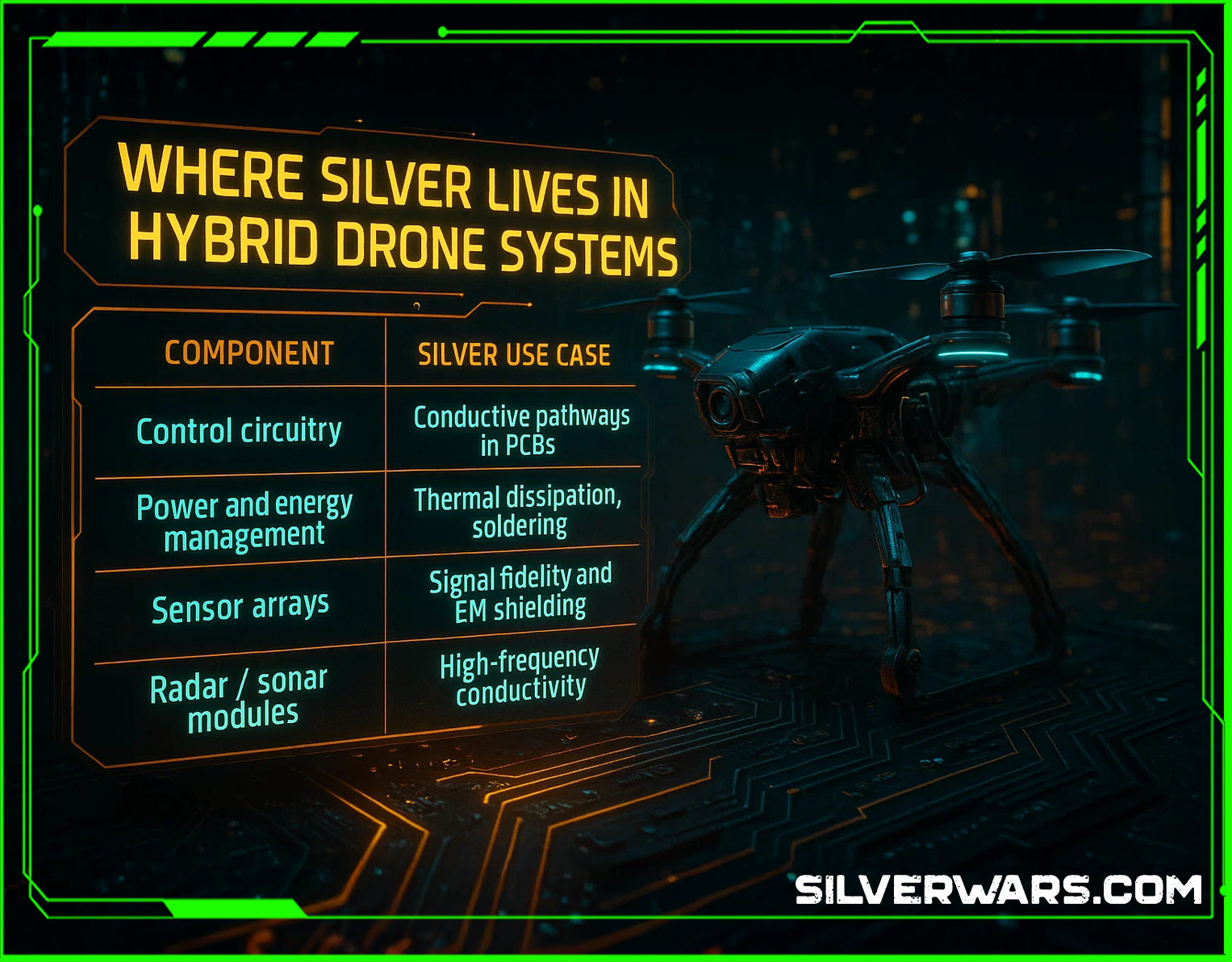It finally happened. Someone made the Call of Duty drone in real life. A group of engineering students in Denmark just built a 3D-printed UAV that can fly through the air, dive underwater, navigate submerged, and then launch itself right back into the sky—over and over again.
This isn’t sci-fi. This is happening now, and it’s not just Denmark. China’s already in the game. The only thing more impressive than the tech is the material quietly powering all of it: silver. And with every new advance in hybrid drone warfare or surveillance, we’re burning through more of it.
How The Drone Game is Evolving
The drone—built by students from Aalborg University—isn’t just some toy-grade test model. It’s a full prototype with real operational control over aerial and aquatic movement. The breakthrough? Variable pitch propellers.
The prop blades adjust their angle in real time depending on whether they’re moving through air or water. High-pitch for airflow. Low-pitch for aquatic drag resistance. They even programmed negative thrust for better underwater maneuvering.
Here’s what this thing can do:
- Take off like a quadcopter
- Dive straight into a body of water
- Swim and maneuver underwater
- Rocket back into the air
The build required months of planning, 3D printing, CNC machining, and custom programming. And yes, it works exactly as intended. The videos confirm it: seamless transitions, stable underwater movement, and smooth exit to flight.
Looking to diversify your portfolio with tangible assets? Jim Cook at Investment Rarities offers expertly curated asset investments with their extremely dedicated team. Discover unique opportunities often overlooked by traditional markets. Visit investmentrarities.com today!
Table: Hybrid Drone System Overview

| Feature | Detail |
|---|---|
| Propulsion | Variable pitch, reversible propellers |
| Mediums | Air and Water |
| Manufacturing | 3D printing, CNC machining |
| Control Software | Custom-programmed onboard system |
| Key Advantage | Seamless aerial-to-submerged operation |
| Possible Applications | Military, SAR (Search & Rescue), marine inspections |
This is the kind of platform DARPA would’ve paid millions for 12 years ago.

Wall Street Silver Reddit is the Home of #SilverSqueeze. We love silver. Every Troy Ounce! No diamond-hands without EXTREME Pressure!
[Now Under SILVER WARS Management]
Silver: The Backbone of This Revolution
The drone’s motion might be fluid, but the materials behind it are solid—especially when it comes to silver. Why? Because every precision-guided, multi-environment drone system relies on the same core electronics:

- Microcircuits
- Antennas
- Power regulation systems
- Control boards
- Sensors
- RF communications
And all of those require silver.
Table: Where Silver Lives in Hybrid Drone Systems

| Component | Silver Use Case |
|---|---|
| Control circuitry | Conductive pathways in PCBs |
| Power and energy management | Thermal dissipation, soldering |
| Sensor arrays | Signal fidelity and EM shielding |
| Radar / sonar modules | High-frequency conductivity |
| Navigation/telemetry hardware | RF transmission and guidance stabilization |
Unlike copper or tin, silver doesn’t degrade signal integrity. That’s why even miniature drones eat through it like candy. And this isn’t just about one prototype in Denmark. China’s been building air-to-water drones for years now, with a model demonstrated publicly in 2023.

Silver Wars is dedicated to Safe Guarding the World's Silver Future.
This Isn’t Just a Cool Toy—It’s a Precursor to Autonomy at Sea
The students at Aalborg weren’t just messing around. Their drone is, functionally, a prototype for near-future military, emergency, and surveillance operations. We're talking about:
- Maritime inspections without surface-level detection
- Search and rescue missions where flight and dive are both essential
- Surveillance drones that can launch from the waterline undetected
- Combat drones that can surface-launch from underwater, strike, and retreat
And if China’s putting budget behind these platforms—and the U.S. is already embedding AI chips into its drone programs—it’s not a stretch to say this entire field is going operational fast.

So Why Should Governments Care?
Because we’re running out of silver. Silver is already under pressure from solar, EVs, and chipmaking. Now we're adding an entirely new category of consumption: aquatic drones with airstrike potential. That’s a problem.
Military platforms are "price-insensitive" when it comes to procurement. They'll pay whatever it takes. But civilian supply chains won’t. If this drone class hits the market—especially with China, the U.S., and Europe all testing variations—then silver availability becomes a national security issue.
And don’t expect the mining industry to keep up. Most known silver deposits are already declining in grade. Recycling can’t keep pace. And silver isn’t just sitting in vaults waiting to be allocated—it’s embedded in tech, sensors, and circuitry that's already in use.

This Is Bigger Than Drones
This is about what happens when every new surveillance system, combat drone, and AI-guided seaborne robot starts draining the same resource—quietly, invisibly, but relentlessly. Hybrid drones are just the tip of the spear.
They show where tech is headed: multi-environment, autonomous, and permanently operational. But they also show where the bottlenecks are. And silver’s at the top of that list.
If governments don’t start securing silver stockpiles now—real ones, not paper contracts—they’ll find themselves boxed out of their own military future. No guidance systems. No radar. No strike drones. Just good intentions and no metal.









